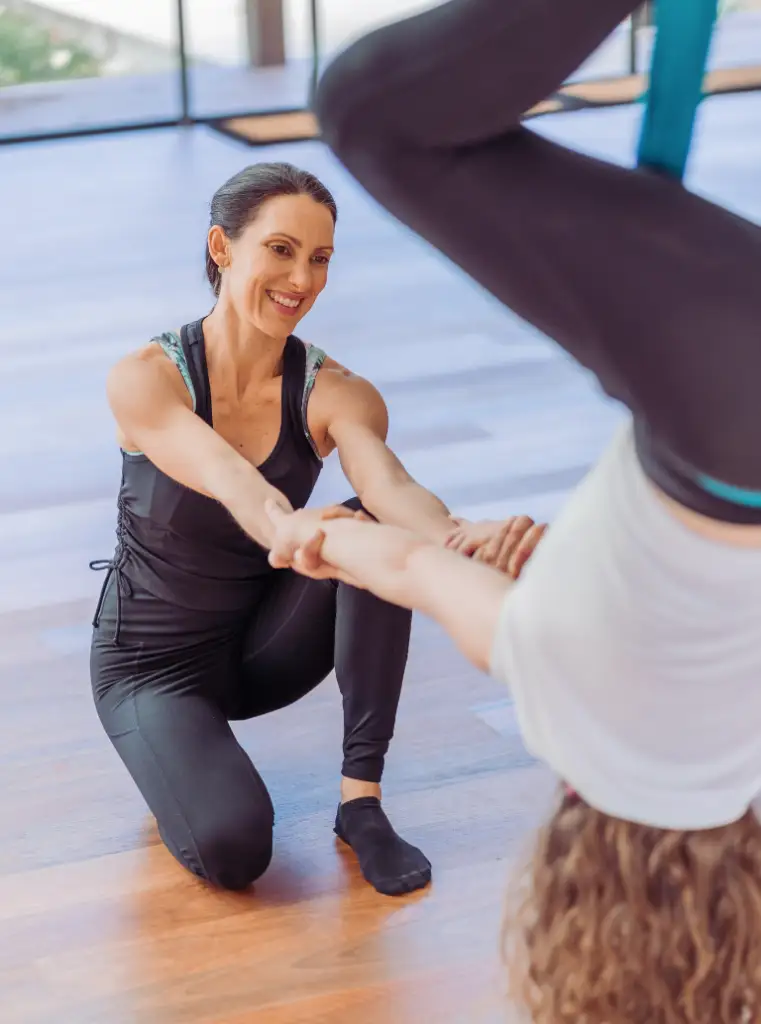
I love that the aerial hammock offers a safe alternative approach to hands-on adjustments!
When I was an apprentice yoga teacher over 20yrs ago, yoga was taught as a therapeutic practice and was delivered on a one-on-one basis in 2hr sessions, where the teacher had a deep understanding of each student’s needs and the practice was tailored and progressed appropriately. In this environment, it was suggested that the teacher could sensitively assist a student to understand a position or posture by physically adjusting or guiding the student’s body, with the student’s consent.
Today most yoga classes are held in commercial environments, rather than therapeutically governed sessions. In the commercial yoga studio, there are certain challenges that make using adjustments inappropriate, such as:
Today I feel instructors need to take these Implications into careful consideration and consider the risk applying hands-on adjustments presents. Personally, for me as a teacher, using the aerial hammock has completely alleviated the inherent risk that offering adjustments in floor-based practice presented. Now, I can use the aerial hammock to empower students to use self–adjusting, self- massage and self-soothing practices. I can guide a student with only the use of verbal cueing to invite a student to apply their own adjustments, enhance sensory or directional awareness, offer support, or provide themselves with more challenge. With the aerial hammock, I can also teach inversions safely without the concerns that teaching headstand or shoulder stand presented in group environments.
Integrating the use of the aerial hammock has helped me become a better, safer, and more inclusive teacher and I encourage all yoga teachers to explore the benefits this may bring to their students, while also protecting themselves and students from any vulnerable or litigious situations.



